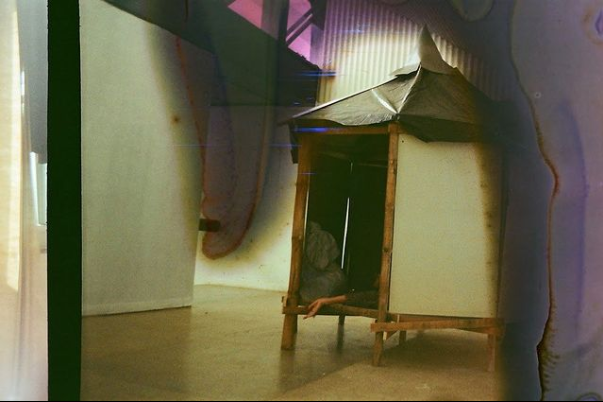


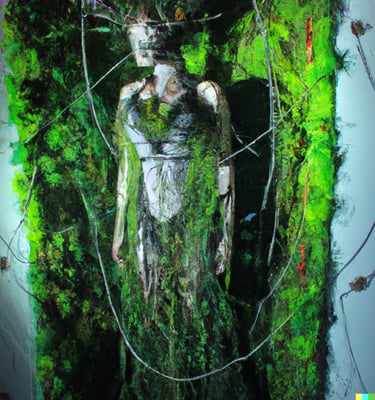


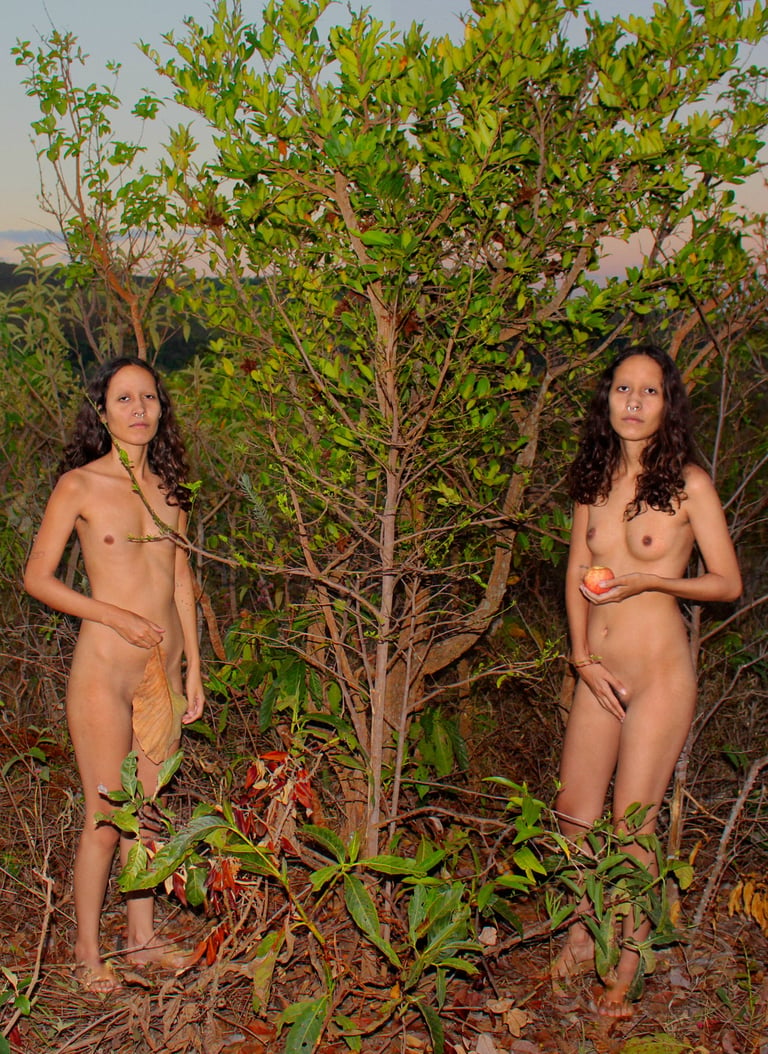

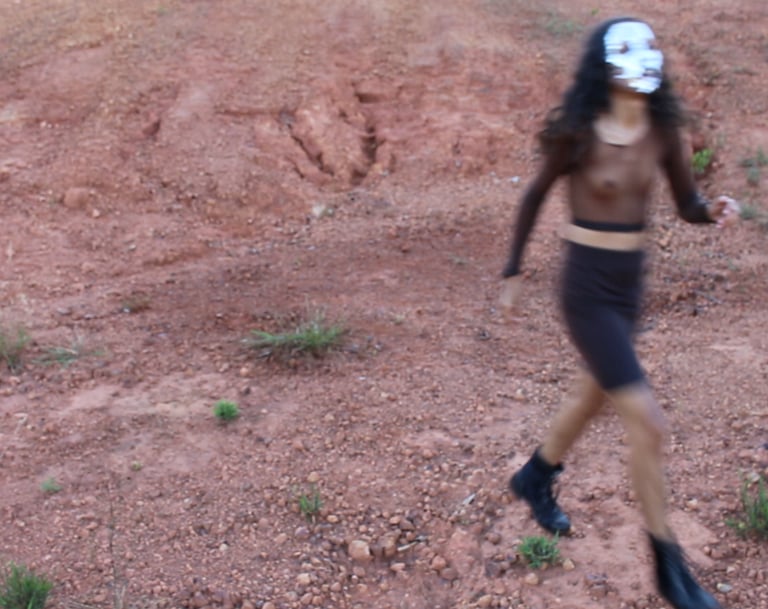

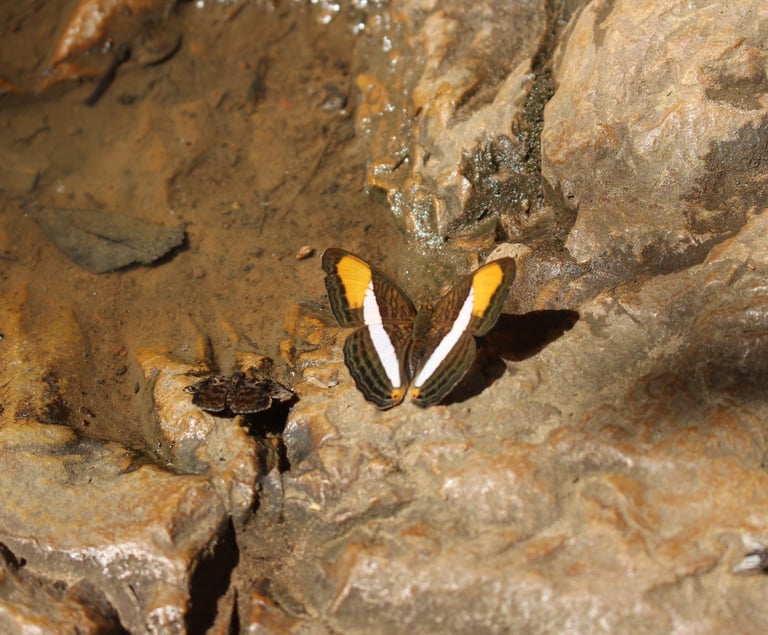

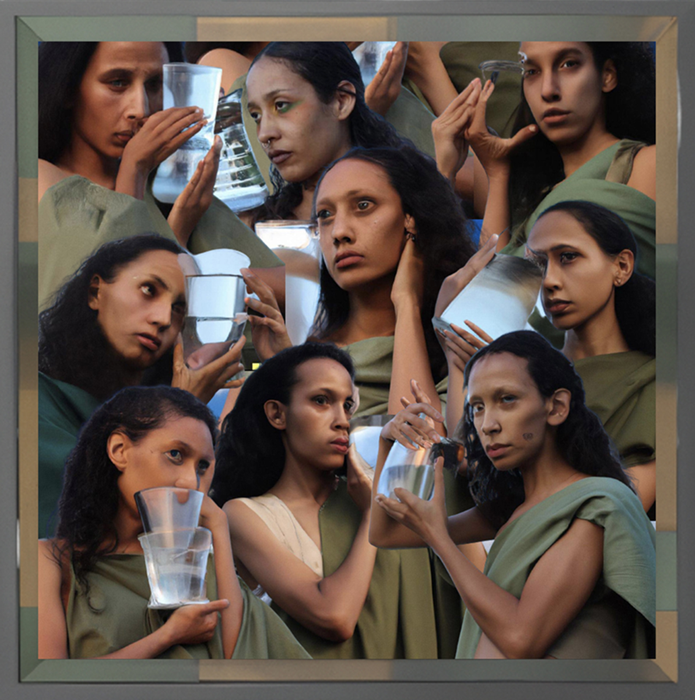

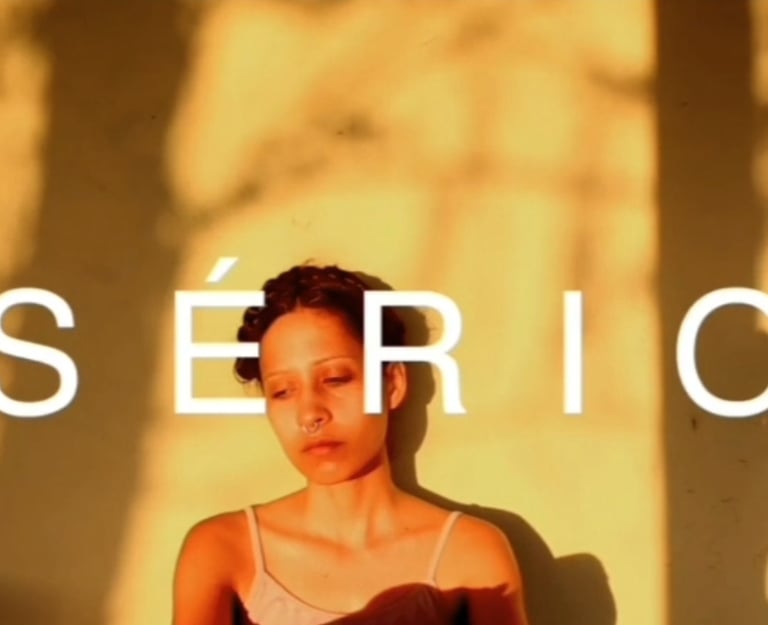



malokinha installation 2019
"Malokinha", created in 2017, is made entirely from repurposed materials, often discarded, and is an installation inspired by Brazilian Indigenous architecture. The project, a collaboration with the artist's father, a significant influence on their artistic journey, holds a special place as a favorite. The origin of this small shelter stems from deep reflection on the right to housing, homelessness, and displaced caboclos, symbolically intertwining with the demarcation of Indigenous lands.
Beyond its physical form, "Malokinha" embodies a deeper narrative, seeking ancestral connections — a journey toward reconciliation and healing.
fugindo de mim videoart 2018
A state of avoidance in which a person constantly runs away from themselves and their own problems, rushing toward nothingness, losing their own boundaries. "Asynchrony" with the Earth's rotation. To get lost, to flee, and inevitably collide with oneself.
imagem semelhança selfportrait 2020
"Imagem semelhança (image likeness )- A reinterpretation of Adam and Eve in a pedagogical attempt to reflect on non-binarity."
Unique printed photograph, developed with mineral pigment on cotton.
Fernando Bueno Collection.
jogo de damas videoart 2022
"There is a certain weight in filming oneself crying, I've done it countless times, but currently the algorithm has solidified an expectation of moments of glory and beauty to the point where there is no space for vulnerability or so-called negative emotions.
The ants symbolize work, routine, and decomposition. Butterflies signal the presence of Oyá. Tears and waterfalls are strongly connected to Oxum. I discovered Fauzi Arap's poem while browsing TikTok, interpreted by Maria Bethânia. The sound came from a remix I produced of the song 'Francisco' by Milton Nascimento. The poem is recited in my voice."
versions of me II AI 2023
"In my journey of experimentation with AIs, I faced a challenge in generating racially complex bodies. Here in Brazil, the majority of the population is mixed-race, a result of a state policy of 'whitening' the 'Brazilian race.' I feel the impulse of the opposite movement; I want to reconnect with my roots that are systematically erased. My skin color is brown, my hair has a curly texture, and my face has Indigenous ethnic features. When trying to generate an 'Indigenous woman,' 'mulatta,' or 'mestiza,' I never achieved the desired results. And when using more general terms, like 'a woman' or something similar, the final result was always a cis white woman, blonde or red-haired. After many attempts and frustrating results, I decided to generate portraits based on a self-portrait as a suggestion. Finally, I could see bodies, faces, and skin tones with which I identified. I feel like I’m always wearing different masks, and that’s the sensation I had when I saw different versions of myself. I also thought about the multiverse and infinitely different timelines. Who am I under different conditions, or in a different reality, or even when considering the multiplicity of feelings and voices within us."
SÉRIO videoart 2020
"SERIOUS is an ironic yet humorous video art piece. While the artist looks directly at you, creating a certain intimacy, you hear the sounds of a silent landscape. It's 5 minutes of active meditation, staring into the camera. Reflecting on impostor syndrome, questioning whether art is a 'serious' job. It's also about questioning the utility of art, but mainly a statement that I do indeed believe art is truly serious work. Still, never take yourself too seriously."
nature is a language AI 2023
“Nature is a language, (can’t you read?)”
"Today, as artificial intelligence becomes increasingly sophisticated, we are also uncovering other forms of intelligence in nature — in plants, animals, and ecological communities on all scales. (...) The idea is that consciousness is not an exclusively human characteristic on this living planet. There are other minds around us in nature, emerging from different forms of life. This evokes the need for a common language. Can we communicate with these minds?"
"Brother David Steindl-Rast offers a provisional answer in his essay 'Spirituality as Common Sense.' In his view, common sense does not refer to rational thinking or problem-solving in practical matters. Instead, it is comparable to the basic human senses, such as sight, hearing, smell, taste, and touch, which allow us to connect with the world around us. But the senses are not exclusive to humans either. All life connects around us, and Steindl-Rast suggests this happens through a 'common sense.' As humans, we experience this common sense when we connect with animals, trees, or other living beings and experience moments of affinity and deep connection. What if life has a common language? We know all life shares a common code: DNA and RNA. But what if life has a common language of the senses, not a language based on a semiotic system, but a language rooted in common sense, a language we can comprehend in principle, perhaps through feeling?"**
Learning the Language of Nature, Timothy Seekings.
"The forest is alive. It will only die if the white people insist on destroying it. If they succeed, the rivers will disappear beneath the earth, the soil will crumble, the trees will wither, and the rocks will break under the heat. The dry land will become empty and silent. The xapiri spirits, who come down from the mountains to play in the forest with their mirrors, will flee far away. Your fathers, the shamans, will no longer be able to call them and make them dance to protect us. They will not be able to repel the epidemic vapors that devour us. No, they will not be able to contain the evil beings that will turn the forest into chaos. Both the whites and all of us, all the shamans, will eventually die. When there is none of them left alive to sustain the sky, it will collapse."
The Falling Sky, David Kopenawa.